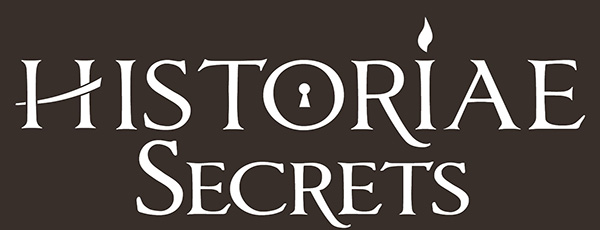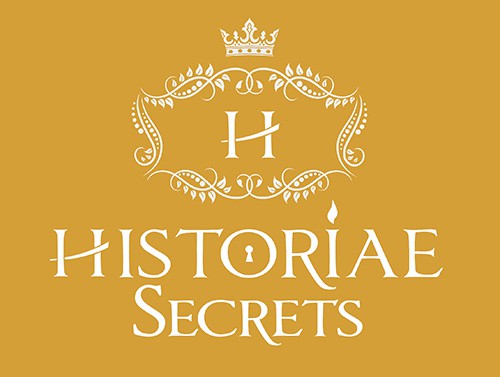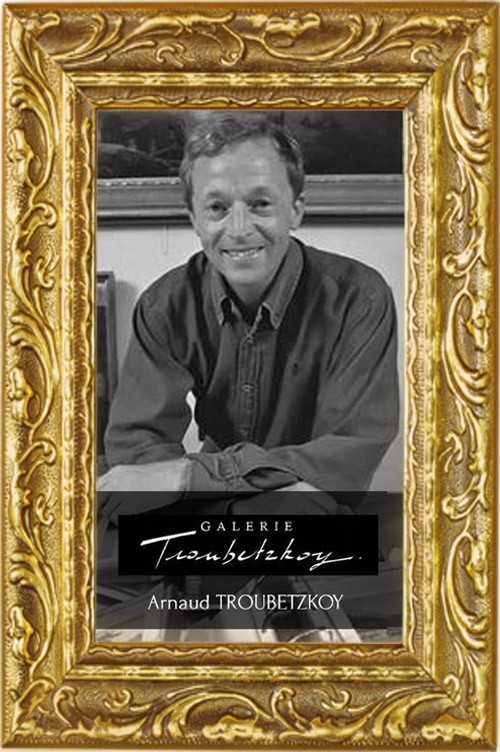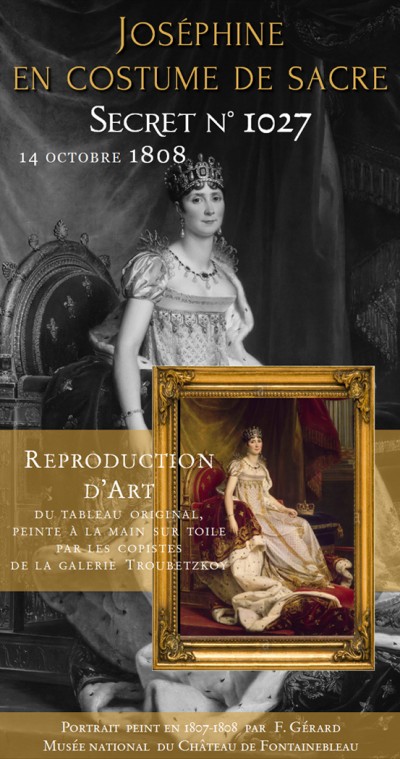The Troubetzkoy Gallery
Created by the Russian prince Igor Nikolaievitch Troubetskoy, the Troubetskoy gallery is the only gallery in the world which specialises in identical copies of artworks which come from private collections.
The exceptional quality of the Troubetskoy replicas is the fruit of its copyists’ unique expertise, which has perpetuated the centuries-old a...
The exceptional quality of the Troubetskoy replicas is the fruit of its copyists’ unique expertise, which has perpetuated the centuries-old a...
Created by the Russian prince Igor Nikolaievitch Troubetskoy, the Troubetskoy gallery is the only gallery in the world which specialises in identical copies of artworks which come from private collections.
The exceptional quality of the Troubetskoy replicas is the fruit of its copyists’ unique expertise, which has perpetuated the centuries-old art of the reproducers of the Cabinet of Paintings, created in 1670 by Louis XIV, with passion and pride.
With a choice of more than 20000 paintings made to measure and painted on demand, the Troubetskoy gallery is the point of reference for large numbers of museums and cultural institutions across the world.
Prince Igor Troubetskoy came from a family of artists. His mother was a musician and his uncle Paolo Troubetskoy was one of the most illustrious names in animal sculpture from the end of the 19th century to the beginning of the 20th. His works caused a sensation at the first Venice biennale in 1895 and in Paris at the Universal Exhibition of 1900 (where he won first prize for sculpture in the Russian category). He created sculptures of the world’s greats, most notably Rothschild, Anatole France, Leo Tolstoy and President Clémenceau.
Igor Troubetskoy was very close to his uncle, who fascinated him and passed on to him his love for the Arts and creative design. Thus it was that Prince Igor Troubetskoy became a painter, in the wake of his ancestors, but above all a collector and connoisseur of Art. He had the privilege of meeting many painters, including (among others) Matisse, Kandinsky, Picasso, Hartung, Séraphine de Senlis, Paul Klee, Beauchant, Messagier and Léger.
The idea of creating a studio of copies came from his collectioner friends, who wished to have the option of having a replica painted of their own originals in the case of loan, sale, storage in a secure location or bequest as part of an inheritance. In 1978, he opened the Troubetskoy Gallery, sponsored by the Countess of Paris.
Arnaud Troubetskoy, son and main inheritor of Prince Igor Troubetskoy’s dynasty, now passionately continues the traditions and artistry of the French copyists.
The unique and internationally sought-after quality of the Troubetskoy copies rests on a production secret which has been jealously kept for almost forty years and which is based on a unique technique in the world photographic printing on canvas. The preliminary imprint of the photographic pigments of the original work on the canvas guaranties an exceptional fidelity to the original.
On the prepared canvas, the Master Copyist then restores the spirit of the painting using his brush, thus making of each piece at once a copy of a work of art and an original work of art.
For its reopening on 1st April 2011, the Claude Monet Foundation wished to offer an experience to its visitors by allowing them to immerse themselves in the historical ambiance of Claude Monet's salon-studio in his house in Giverny, hanging up reproductions of the original works that Claude Monet had suspended from the walls there himself.
Placed under the scientific direction of Sylvie Patin, a correspondent of the Académie des Beaux-Arts and author of numerous works on Impressionism, the objective became to arrange the salon-studio to resemble its layout in Claude Monet's time as closely as possible. Several photographs taken in 1920 have guided the rebuilding work. Their analysis and the meticulous study of the history of the master's canvases have permitted the precise identification of those which were originally presented at Giverny. Sixty paintings were selected to be copied then suspended from the walls of the salon-studio, in an arrangement which facilitated the rediscovery the atmosphere of yesteryear, while making sure to remain respectful to historical truth.
It was to the Troubetskoy Gallery that the completed replicas of the paintings were entrusted; each of them was made using Troubetskoy's secret technique.
Thus it is in the salon-studio, above the chaise longue reupholstered with a cornflower and roses design, the lamp with an identical shade, the peacock feathers and the original furniture belonging to Monet, that 60 Troubetskoy copies of Claude Monet's paintings, which decorated the salon when the artist died in 1927, now preside.
The quality of the replicas is breath-taking, transporting the viewer through History to share in the intimacy of Claude Monet.
Lire la suite
The exceptional quality of the Troubetskoy replicas is the fruit of its copyists’ unique expertise, which has perpetuated the centuries-old art of the reproducers of the Cabinet of Paintings, created in 1670 by Louis XIV, with passion and pride.
With a choice of more than 20000 paintings made to measure and painted on demand, the Troubetskoy gallery is the point of reference for large numbers of museums and cultural institutions across the world.
Prince Igor Troubetskoy came from a family of artists. His mother was a musician and his uncle Paolo Troubetskoy was one of the most illustrious names in animal sculpture from the end of the 19th century to the beginning of the 20th. His works caused a sensation at the first Venice biennale in 1895 and in Paris at the Universal Exhibition of 1900 (where he won first prize for sculpture in the Russian category). He created sculptures of the world’s greats, most notably Rothschild, Anatole France, Leo Tolstoy and President Clémenceau.
Igor Troubetskoy was very close to his uncle, who fascinated him and passed on to him his love for the Arts and creative design. Thus it was that Prince Igor Troubetskoy became a painter, in the wake of his ancestors, but above all a collector and connoisseur of Art. He had the privilege of meeting many painters, including (among others) Matisse, Kandinsky, Picasso, Hartung, Séraphine de Senlis, Paul Klee, Beauchant, Messagier and Léger.
The idea of creating a studio of copies came from his collectioner friends, who wished to have the option of having a replica painted of their own originals in the case of loan, sale, storage in a secure location or bequest as part of an inheritance. In 1978, he opened the Troubetskoy Gallery, sponsored by the Countess of Paris.
Arnaud Troubetskoy, son and main inheritor of Prince Igor Troubetskoy’s dynasty, now passionately continues the traditions and artistry of the French copyists.
The unique and internationally sought-after quality of the Troubetskoy copies rests on a production secret which has been jealously kept for almost forty years and which is based on a unique technique in the world photographic printing on canvas. The preliminary imprint of the photographic pigments of the original work on the canvas guaranties an exceptional fidelity to the original.
On the prepared canvas, the Master Copyist then restores the spirit of the painting using his brush, thus making of each piece at once a copy of a work of art and an original work of art.
For its reopening on 1st April 2011, the Claude Monet Foundation wished to offer an experience to its visitors by allowing them to immerse themselves in the historical ambiance of Claude Monet's salon-studio in his house in Giverny, hanging up reproductions of the original works that Claude Monet had suspended from the walls there himself.
Placed under the scientific direction of Sylvie Patin, a correspondent of the Académie des Beaux-Arts and author of numerous works on Impressionism, the objective became to arrange the salon-studio to resemble its layout in Claude Monet's time as closely as possible. Several photographs taken in 1920 have guided the rebuilding work. Their analysis and the meticulous study of the history of the master's canvases have permitted the precise identification of those which were originally presented at Giverny. Sixty paintings were selected to be copied then suspended from the walls of the salon-studio, in an arrangement which facilitated the rediscovery the atmosphere of yesteryear, while making sure to remain respectful to historical truth.
It was to the Troubetskoy Gallery that the completed replicas of the paintings were entrusted; each of them was made using Troubetskoy's secret technique.
Thus it is in the salon-studio, above the chaise longue reupholstered with a cornflower and roses design, the lamp with an identical shade, the peacock feathers and the original furniture belonging to Monet, that 60 Troubetskoy copies of Claude Monet's paintings, which decorated the salon when the artist died in 1927, now preside.
The quality of the replicas is breath-taking, transporting the viewer through History to share in the intimacy of Claude Monet.





